The best Mac apps in 2025 from the App Store and beyond
The best Mac photo editors, writing apps, productivity tools, and essential utilities
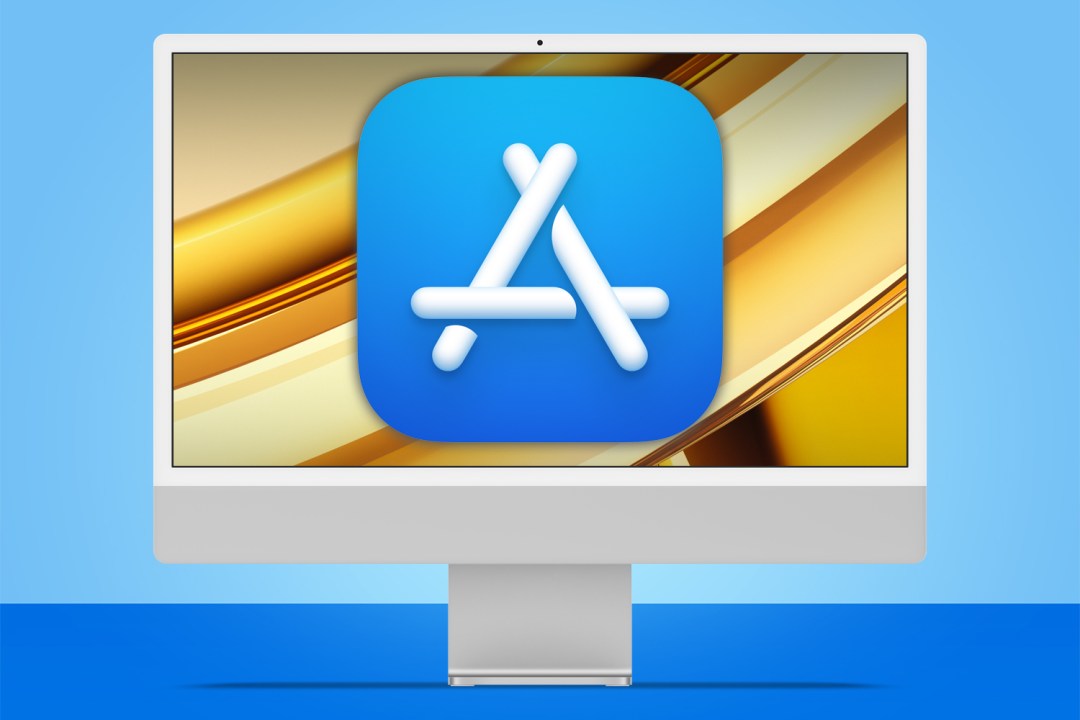
Your shiny new MacBook Pro – one of the best laptops on sale right now – or iMac has booted up and is sitting there, expecting something to happen. What next? You could do something boring, like setting up email (yawn) or aimlessly surfing the internet in Safari until your eyes glaze over. Instead, get creative, be productive, and make some noise with our selection of the best Mac apps around.
Store wars

The apps in our round-up are mostly available on the Mac App Store, although some can be bought directly from their creators; several can only be bought that way.
For beginners, initially going MAS-only is a good idea. Mac App Store apps are easy to install, tied to your Apple ID, don’t require registration keys, and can be redownloaded at any time.
But going further afield has its own benefits. Direct sales means more money for the creators, but also access to products Apple won’t sell on its store, due to them requiring deeper macOS integration. However, when buying direct, please ensure sites you download from are reputable (like those linked to below).
The best Mac photo and video apps
Apps for making your snaps shine, unleashing your inner designer, and becoming the next Spielberg.
Pixelmator Pro

Most people don’t need full-fat Photoshop for improving their pics – but they want something a bit more powerful than Apple’s Photos. Pixelmator Pro brings some natty black threads to your Mac – and also Machine Learning.
In many cases, it can Like Pixelmator Photo for iPad, this Mac app attempts to fix any snap with a single button press – and it often succeeds. And when you need to delve deeper, there’s a solid mix of adjustment sliders, drawing tools, and eye-popping visual effects.
Affinity Photo
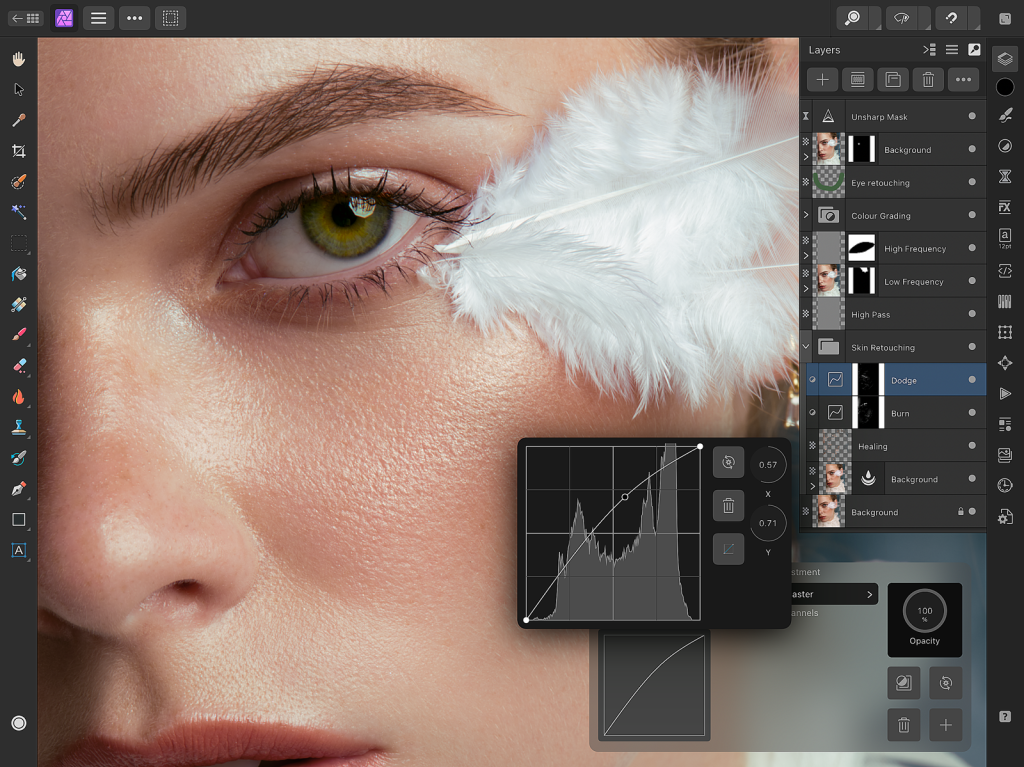
To call Affinity Photo audacious is putting it mildly. Blasting on to the scene pretty much fully formed back in 2015, it gave Photoshop the software equivalent of a glove slap. For here was full-on high-end photo editing, for under fifty bucks, forever.
Years on, Serif’s upstart remains the real deal. It’s a touch more expensive now, but packed full of even more features for retouching and creating raster art from scratch. It also works wonderfully with its iPad counterpart and Serif’s own Affinity Designer.
Buy Affinity Photo ($69.99/£67.99, direct / $69.99/£67.99, Mac App Store)
Picture this: Adobe Photoshop
We’ve already mentioned it twice. And if you want the original, yes, Adobe Photoshop ($22.99/£21.98 per month, direct) is on the Mac. Hang on for a deal before signing up for the monthly subscription, mind.
Affinity Designer
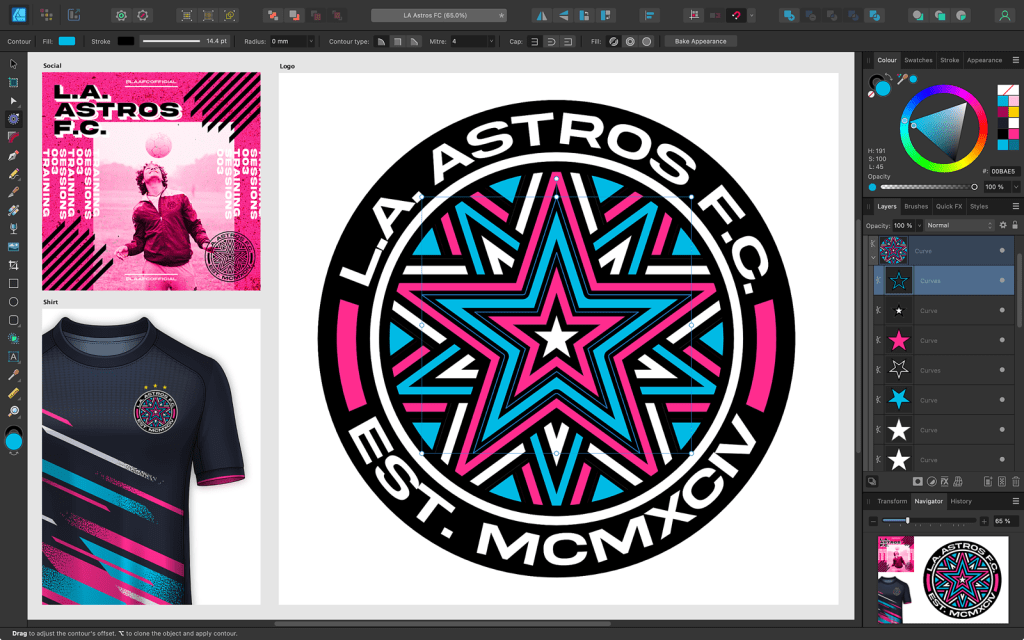
For some digital artists, the very thought of raster art makes them think every pixel is jabbing them in the eye. Instead, they prefer getting their vectors on, using shapes and curves to craft gorgeous illustrations, diagrams and interfaces.
Affinity Designer is a buttery smooth option for creating such artwork on a Mac. It comes across like Adobe Illustrator without the flab, smartly integrates with Affinity Photo, has a feature-equivalent iPad version, and is a huge bargain at under 70 bucks.
Buy Affinity Designer ($69.99/£67.99, direct / $69.99/£67.99, Mac App Store)
Final Cut Pro
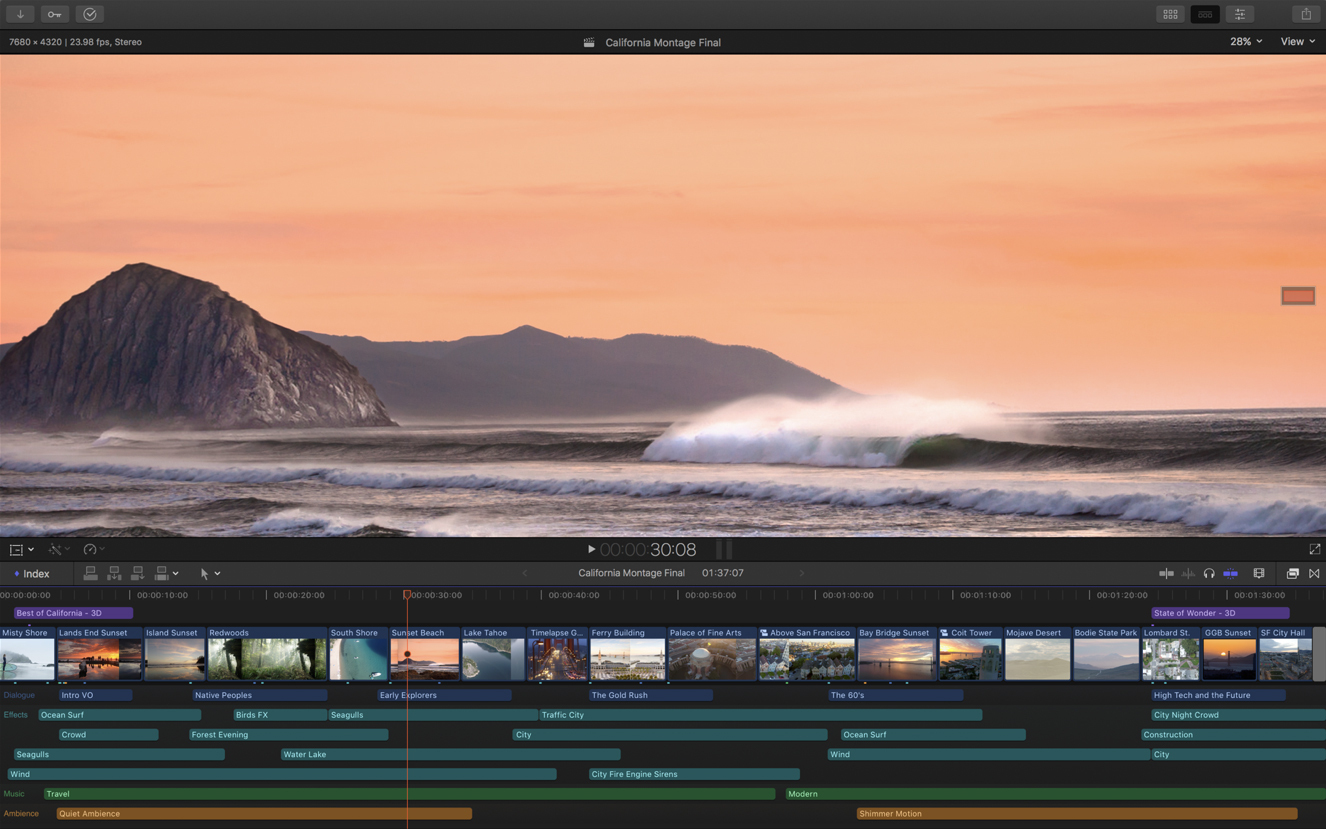
Perhaps you have designs on Hollywood, and fancy yourself to transform random videos of your cat into a cinematic masterpiece that’ll net you an Oscar nod. If so, you’ll instantly dismiss iMovie – a mere abacus next to the supercomputer that is Final Cut Pro.
Fast and powerful, this is the app you want to be using to edit all your home movies, even if it’s overkill in the same way you don’t really need that brand-new flagship iPhone for playing Candy Crush.
Buy Final Cut Pro ($299.99/£299.99, Mac App Store)
Home cinema: iMovie
For normal people, though, iMovie (free, Mac App Store) is fab for smashing videos into shape, rather than just uploading them unedited to social networks, like some kind of monster who forces friends to sit through every painful second.
The best Mac music production apps
Apps that’ll instantly transform you into the next Kraftwerk, Fatboy Slim or Hendrix. Probably.
Logic Pro
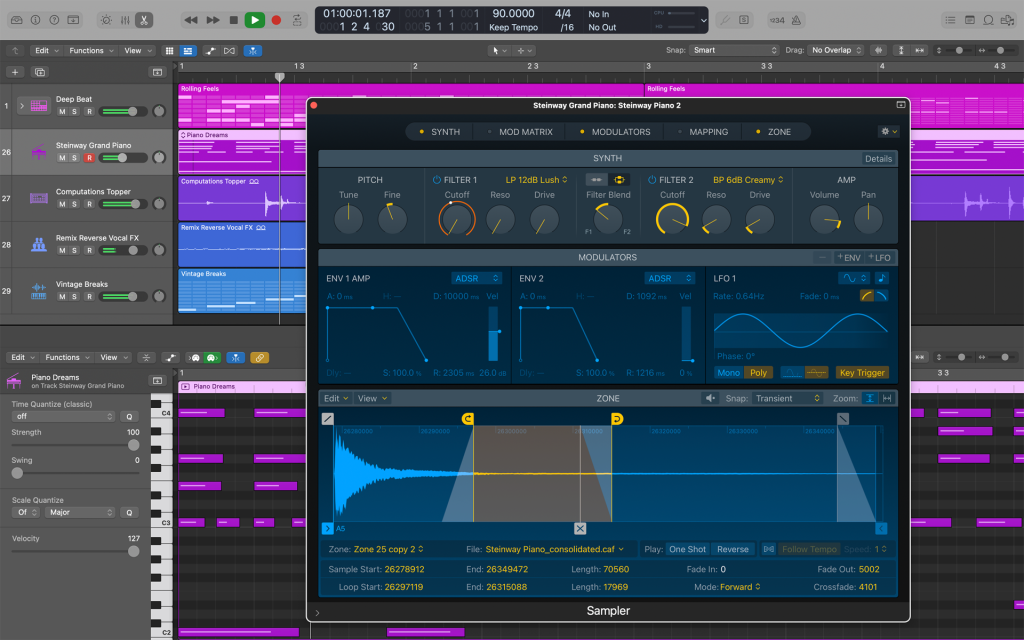
If you fancy yourself topping the charts, fist-bumping Adele at a music awards ceremony, and selling ludicrously overpriced T-shirts to your adoring fans, that all starts in Logic Pro.
Used by musicians and engineers the world over, this advanced music-making tool gives you everything you need to make beautiful music – or a horrible dirge. You get virtual drummers, stunning synths, guitar amps, loops, samples, and buckets of auto-tune. Just go easy on the last of those, eh?
Buy Logic Pro ($199.99/199.99, Mac App Store)
Rock out: GarageBand
Like the idea of Logic Pro, but not a two-hundred bucks hole in your savings? Then try capable freebie GarageBand (free, Mac App Store), which still does a lot of the same stuff.
Korg Gadget
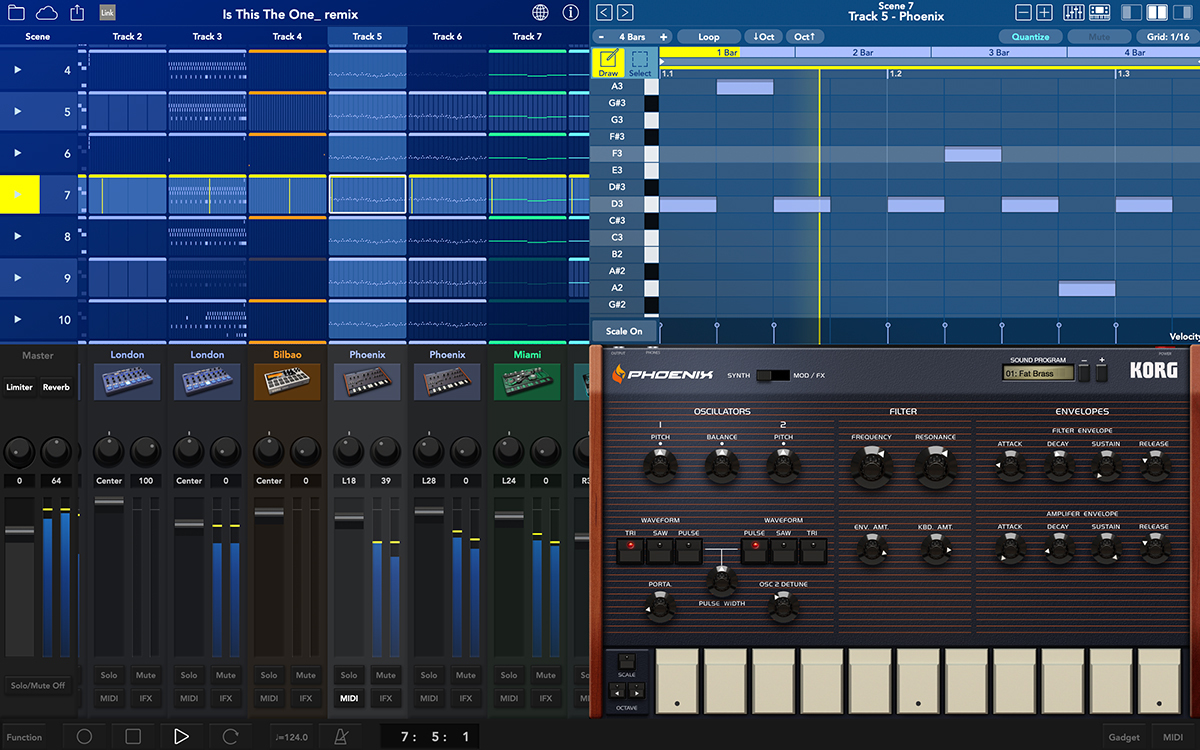
We adore the iOS version of this app. The Mac incarnation perhaps brings across a bit too much of that, ignoring some Mac conventions; but there’s no denying that it’s packed full of amazing synths and noises.
The scene/loop-based workflow is pretty great as well, enabling you to crank out electronic masterpieces that’d make Aphex Twin, Daft Punk and Depeche Mode nod approvingly. As an added bonus, each synth is also provided as a plug-in for Logic Pro.
djay
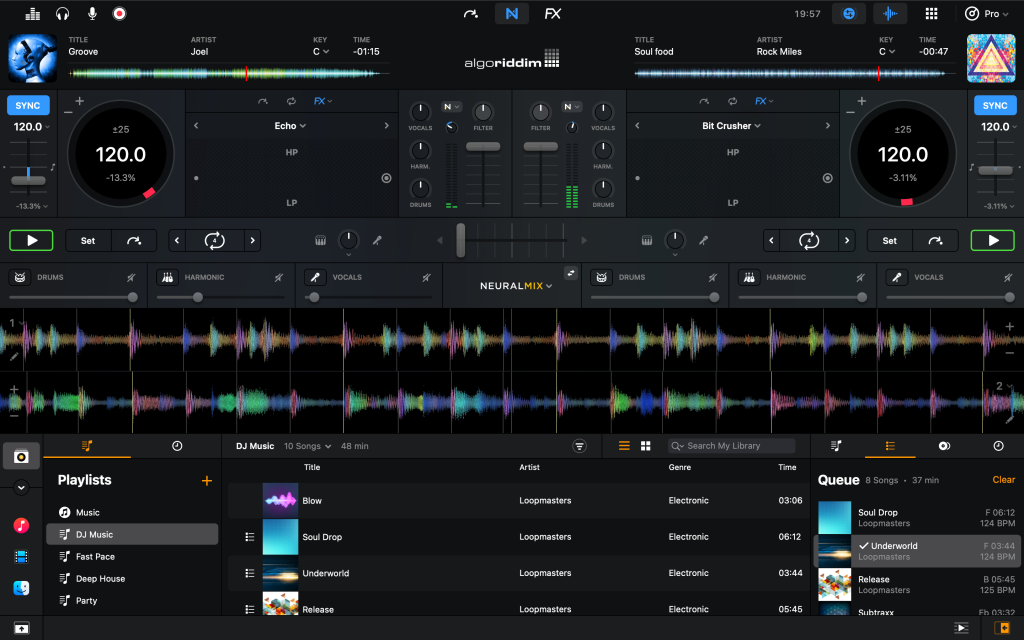
You might think the world would be a better place if everyone was still knee-deep in vinyl. The fact is that even DJs are increasingly shifting their decks from the physical to the virtual.
If you fancy transforming your Mac in similar fashion, djay is where it’s at. You can kick off with basic crossfading and beat-matching on a two-deck set-up, or take the plunge with full-on four-deck madness with videos and slideshows, adding irritating phasing effects to your heart’s content.
Capo 3
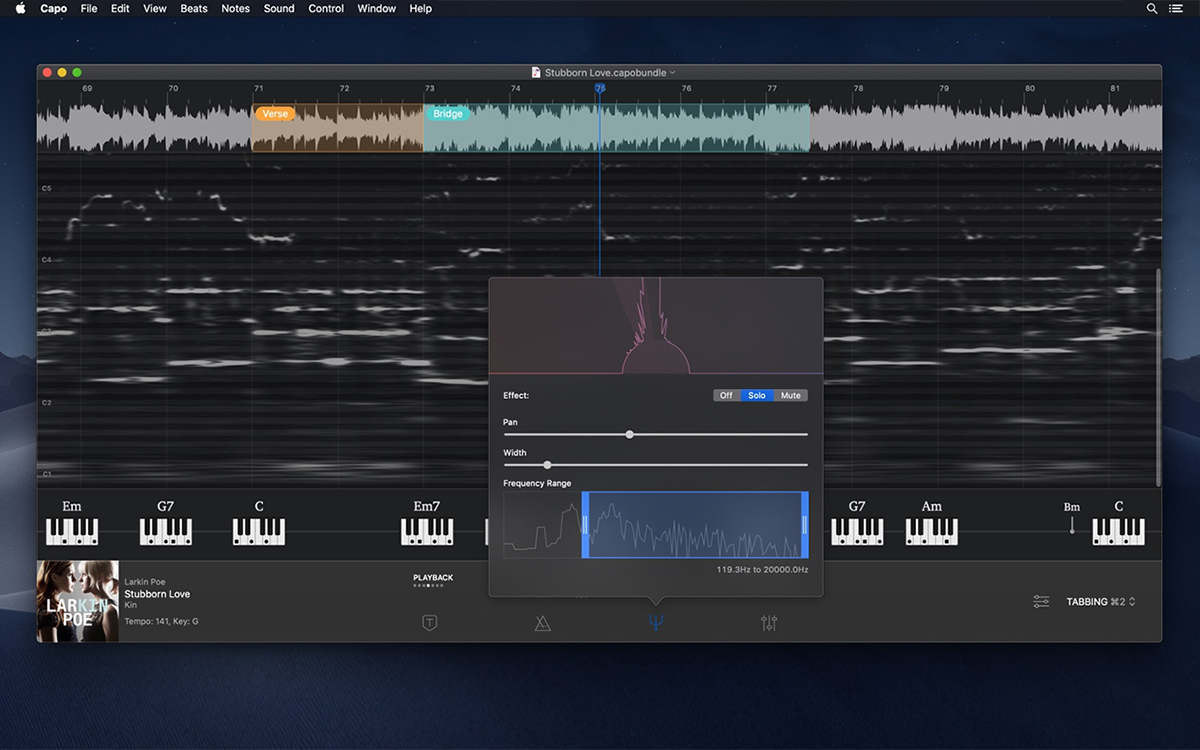
Nailing a new song can drive you to madness – unless you first load the track into Capo 3. With this app, any song can be slowed right down without affecting its pitch, and you can then loop sections to master the tricky bits.
The app guesses (often accurately) what chords are being played, and you can draw on top of a spectrogram to have a fighting chance of figuring out riffs. To be more helpful, the app would actually have to play the guitar for you.
The best Mac writing and office apps
Everyone’s got a bestseller in them, right? Get yours out of your head with these apps. Or just write a memo or something. Your choice.
Scrivener 3
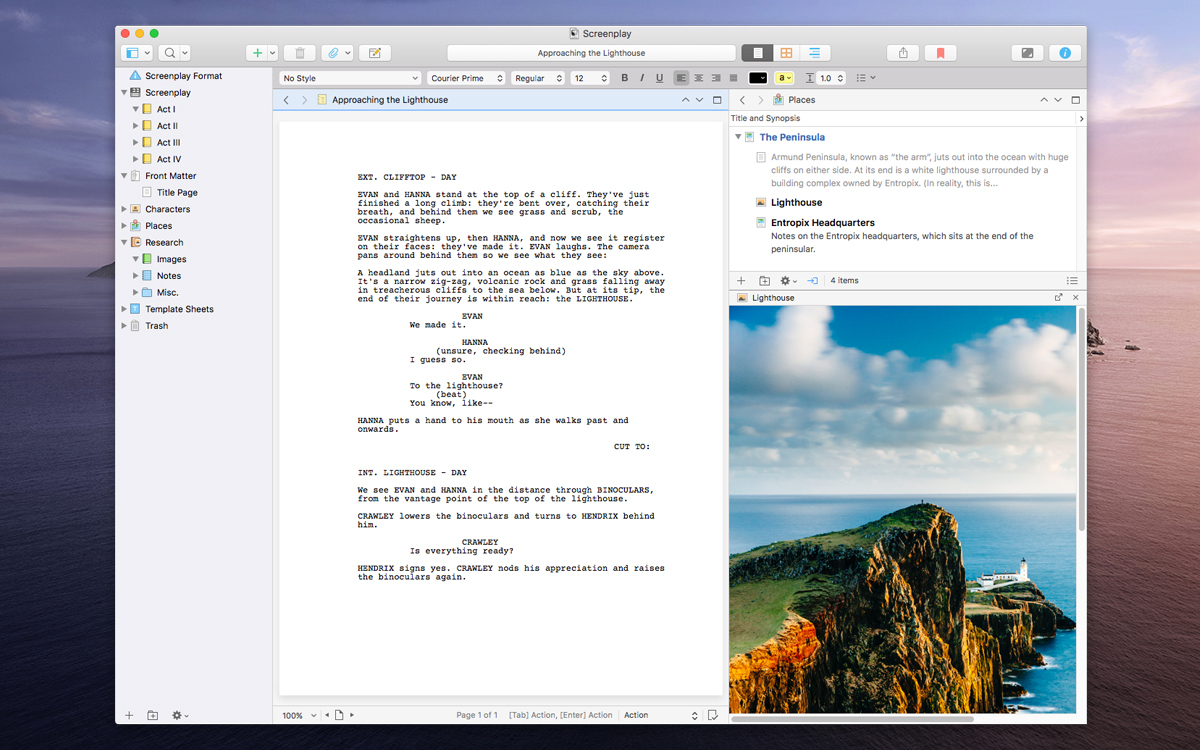
Whenever you’ve a piece of text to write you can’t just bang out in one go, you need something to organise notes, work on drafts, and stash research. If you hate yourself, use Word and a bunch of loose documents on your computer. Alternatively, try Scrivener 3.
The app’s usable but powerful, providing a wealth of tools for writing, arranging chunks of text, bundling research files, and exporting everything to PDF, EPUB or plain old text when you’re done.
Buy Scrivener 3 ($59.99/£49.99, direct / $59.99/£59.99, Mac App Store)
iA Writer
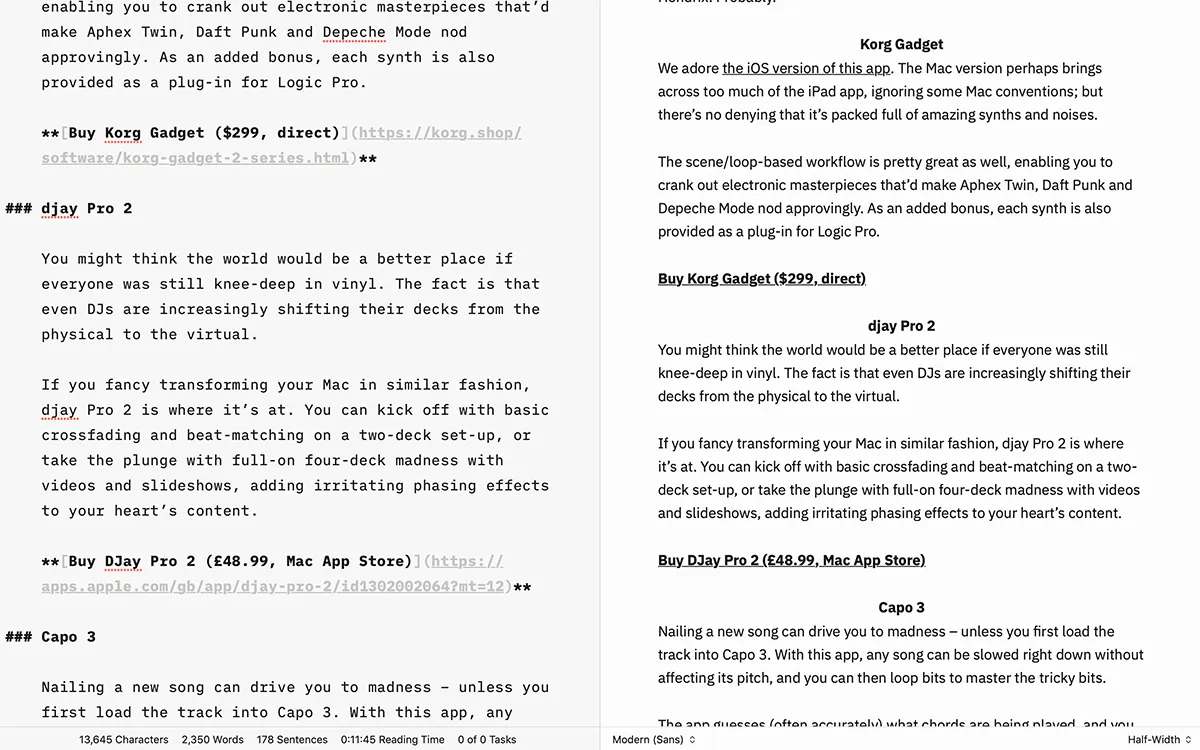
Even if what you’re writing is a bit more straightforward, that doesn’t mean you should immediately fire up Word, Pages, or Google Docs. Instead, avoid distractions with iA Writer.
The app comes across like the designer snapped at seeing one too many buttons in the aforementioned apps, and then went full-on minimal. But this makes for a great environment when you want to get on with writing while what you’re using gets out of your way – like a smart modern take on a typewriter.
Dig deeper and there are features that will improve your writing, such as optional cliche flags, and the means to catch and assign AI-written fare, so it doesn’t get mixed up with human-created words.
MindNode
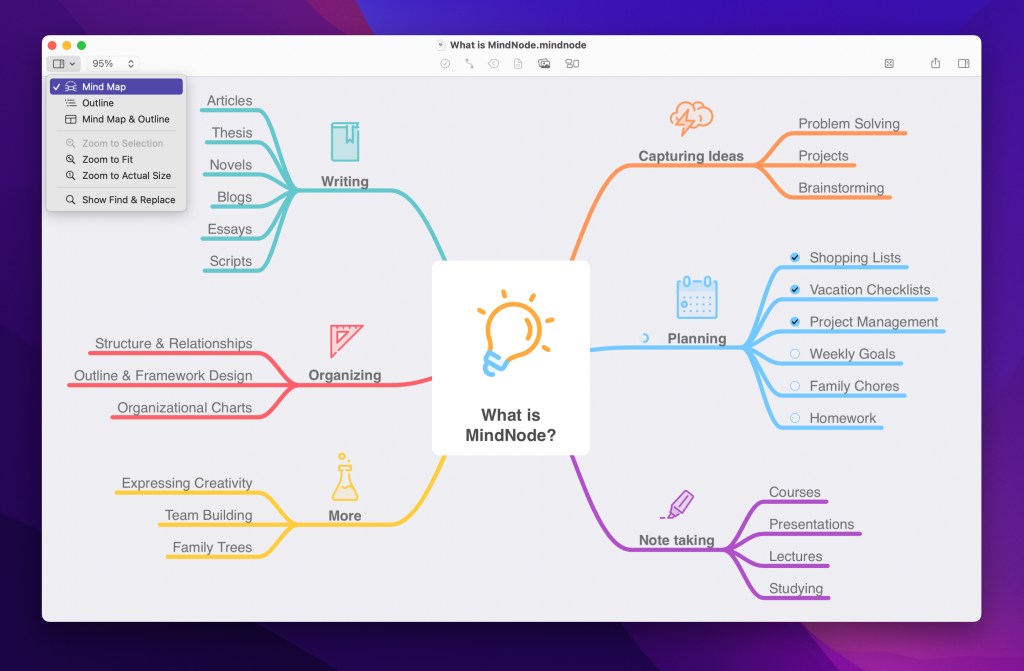
Whether you’re planning a party or trying to get ideas for a vital project out of your head, mind-mapping is a great way to organise your thoughts. MindNode takes this approach into the digital realm, with a superb, flexible interface.
You can get started with a bulleted list, which with a single click explodes into a mind map that can be augmented with all manner of colour, imagery, stickers, and icons. And probably good ideas too, although they’re optional (and down to you).
Buy MindNode (free or $19.99/£19.99 per year, Mac App Store)
BBEdit

With 30 years under its belt, BBEdit is a veteran of the Mac. And its reached its fine old age by being relentlessly excellent, by way of an abundance of features for anyone who works with words, textual data and code.
In all cases, the app is unparalleled when it comes to editing, search, and manipulation of documents. It chews through even the largest of files. And even if you don’t use it as your primary tool for, say, writing copy, you’ll be glad to have it installed for tricky find-and-replace sessions.
Buy BBEdit ($59.99, direct / $49.99/£49.99 per year, Mac App Store)
Soulver 3
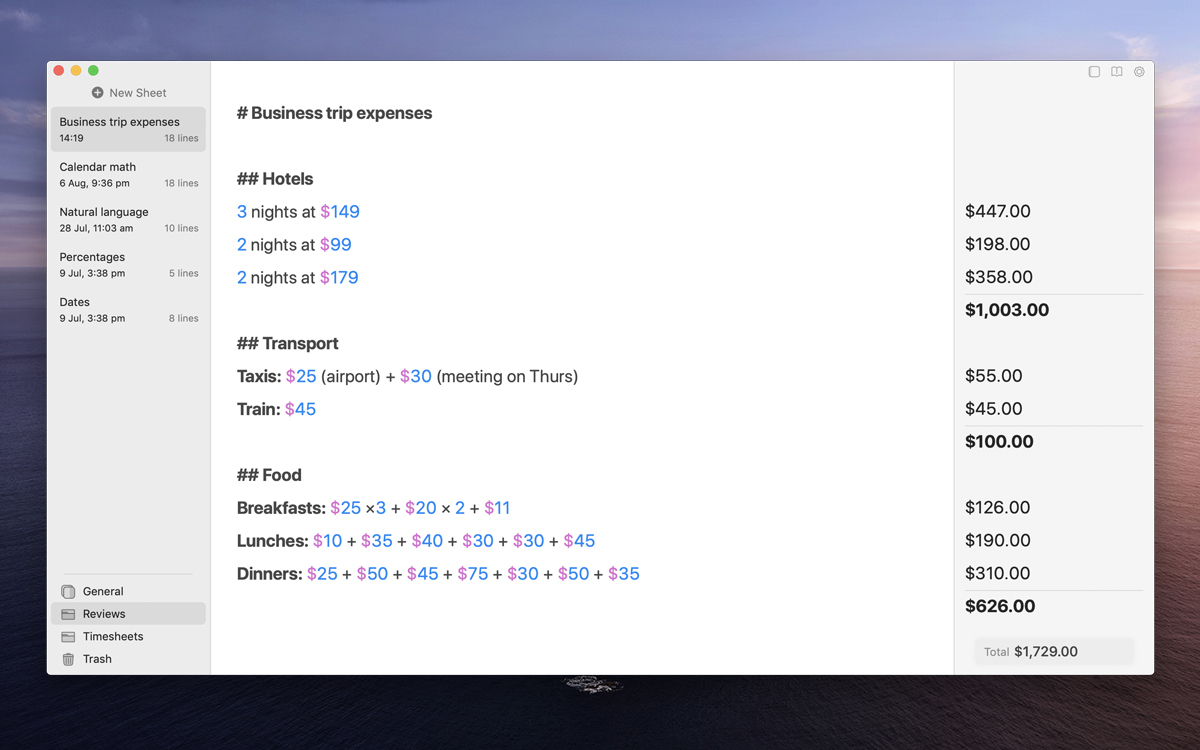
Even the earliest Mac had a calculator. The snag is it was rubbish – and the one on current Macs is little better, barely moving on from a real-world equivalent. By contrast, Soulver is like a notepad that tots up sums as you go.
As you craft your calculations, with inline words for added context, figures are intelligently extracted. Line endings (totals) can be added as live tokens to subsequent lines, making for something that’s part notepad, part spreadsheet, part ‘back of an envelope scribbles’, and all magic.
The best Mac productivity apps
Make better use of your time, never forget a face, and delve into Windows on your Mac, with these great apps.
Fantastical
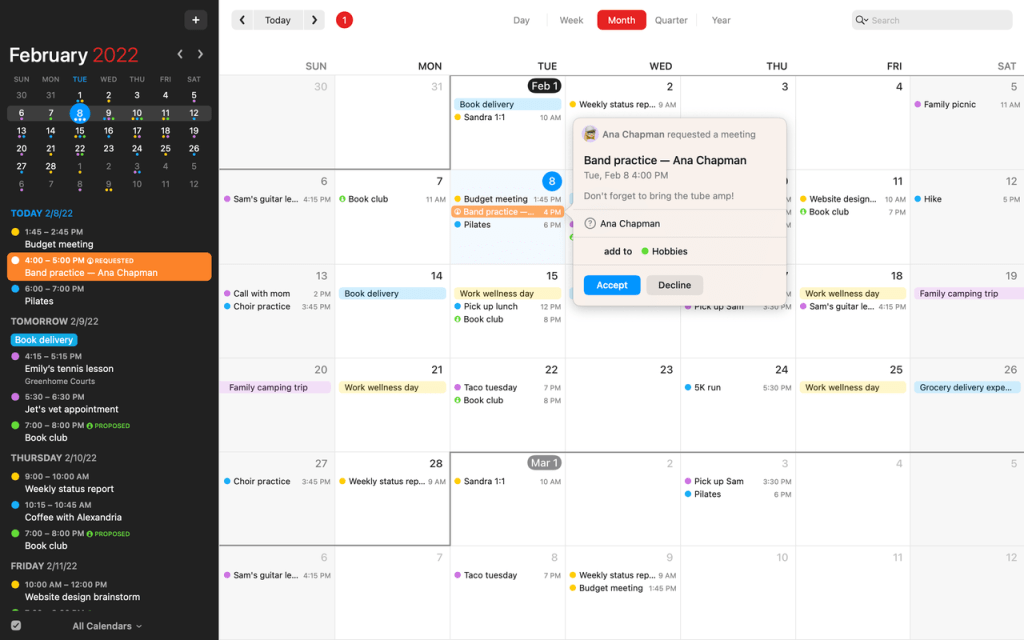
Yes, we know that macOS comes with a calendar app built in, and it’s pretty good – but Fantastical is better. The main window twins a day, week, month or year view with a scrolling ticker of events, so you can blaze through your schedule.
From the menu bar, you can quickly check what’s coming up, and also create new events. Fantastical makes use of natural language for these, building events before your eyes as you enter new details, lessening the likelihood of errors.
Buy Fantastical (free or $4.75/£5 per month, direct / free or $6.99/£6.99 per month, Mac App Store)
Wee calendar: Itsycal
If Fantastical sounds like overkill, check out Itsycal (free, direct). It sits in the menu bar, displaying the date. Click for a pop-up calendar, and (optionally) events from Calendar.
NetNewsWire
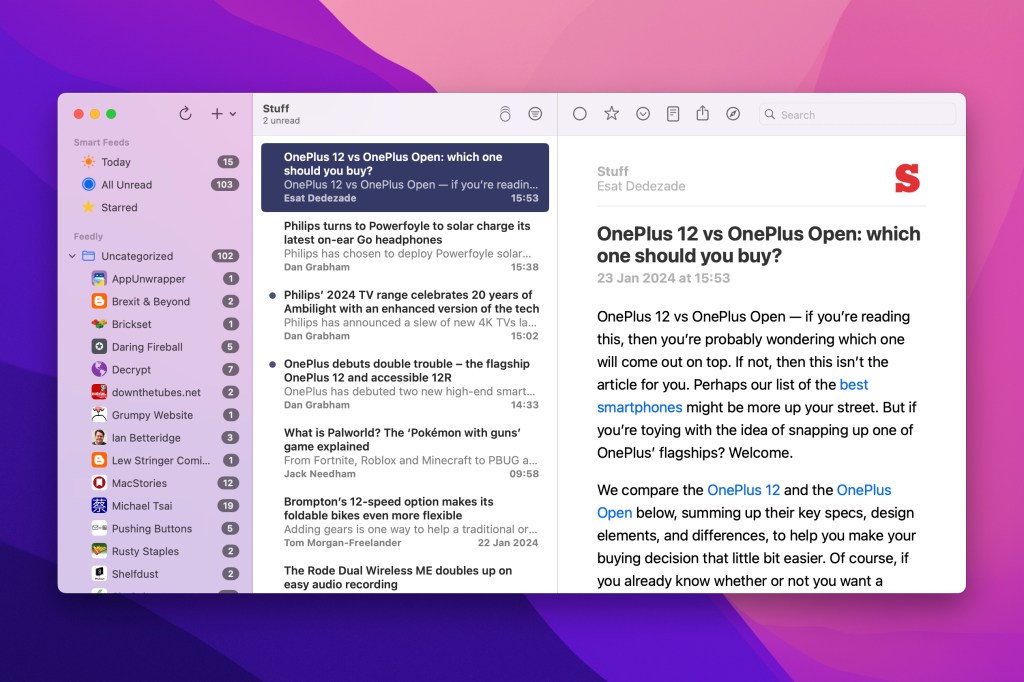
Keeping up with the news can be a distraction; worse, algorithm-based news readers like Apple News make assumptions about what you want to see. NetNewsWire is old-school, having you subscribe to website feeds, whereupon it serves up a list of articles to read.
Creaky techies will recognise this as RSS. But with NetNewsWire, ancient tech meets modern stylings, with an app that strips cruft from internet articles, and provides a raft of tools for enhancing your reading experience and syncing your progress across devices.
Parallels Desktop
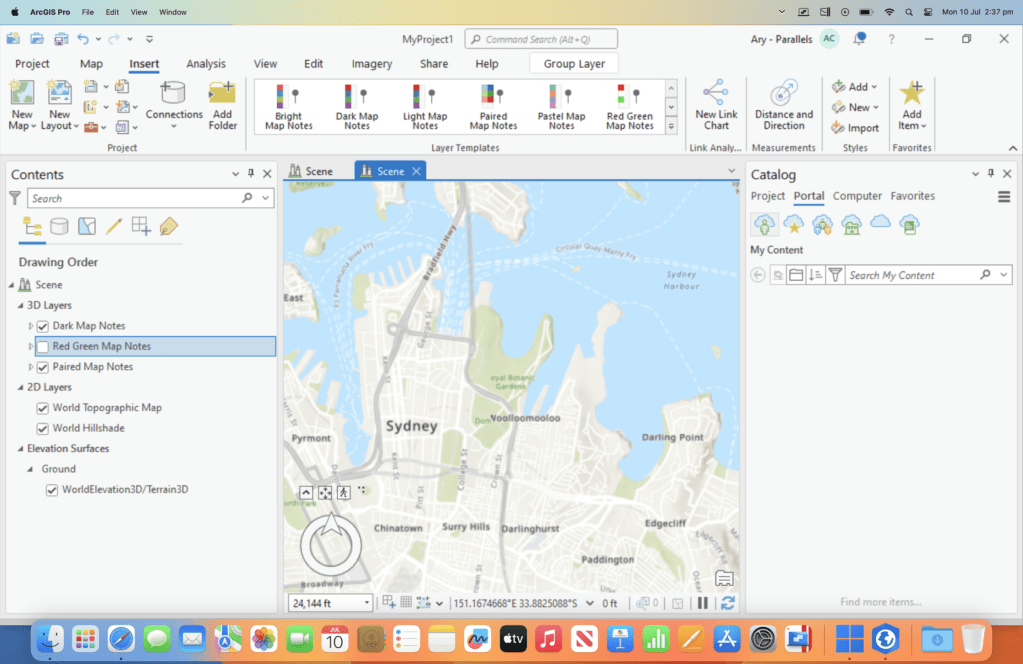
You might have left Windows behind for a shiny new Mac, or be a long term Mac user who comes out in hives at the very mention of the W word. But sometimes, Windows just can’t be avoided. Do be mindful, though, that if you’re on an Apple Silicon Mac, you’ll be running Windows on ARM.
Parallels Desktop lets you quickly and easily create virtual PCs, which can run inside their own windows, or you can opt to have Windows apps run side-by-side with Mac ones. The app can run Linux VMs too, and even ones with older versions of macOS if Apple’s horribly killed an app you depended on.
The best Mac apps for your downtime
When life shifts from work to play, use these apps to entertain yourself.
MusicHarbor
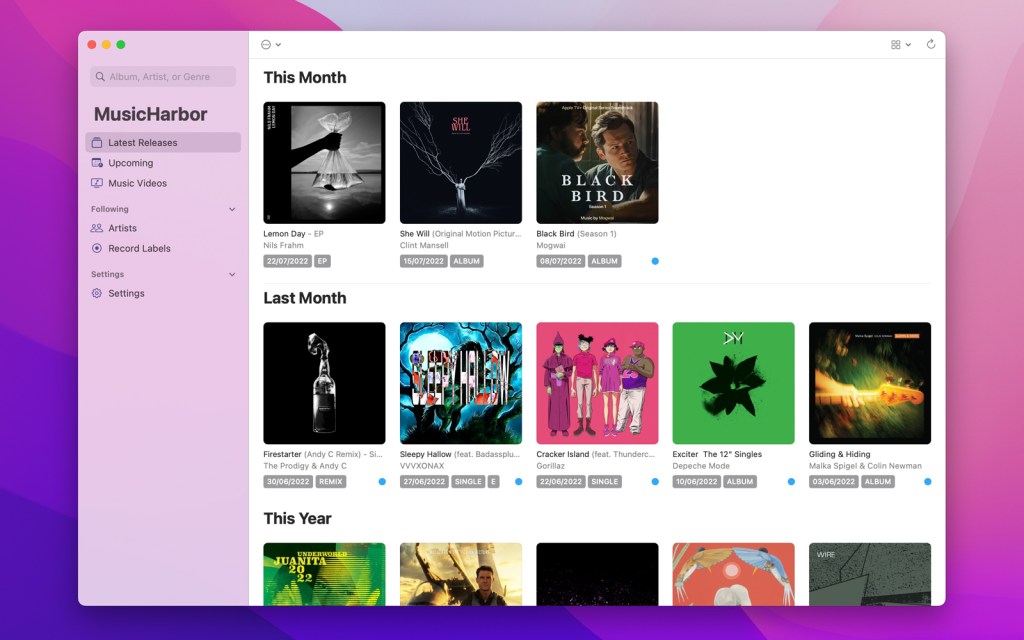
Apple’s Music app is fine for playback and surfacing new tunes you’ll like, but it’s rubbish at keeping tabs on favourite artists. Handily, MusicHarbor does that job brilliantly.
You ‘import’ artists from Music or add them manually. The app then shows latest and upcoming releases, which you can preview or add to your library. Promo videos are available too, like your own personalised MTV.
The app generously gives you all this for free; but lob the creator a one-off payment and you unlock filtering options and can follow record labels.
Buy MusicHarbor (free or $6.99/£6.99, Mac App Store)
Book Tracker

If you often guiltily look at piles of unread books around your home, glance at digital books installed on devices, and then decide to buy yet more books (because, hey, more books), Book Tracker is a must.
Log your collection in the app by bar-code scans or online searches, and then tag/organise as you see fit. You can track what you’re currently reading and note down what you thought when you were done. And being able to flag books as ‘loaned’ means you should never again lose a precious volume to a forgetful friend.
Buy Book Tracker (free + $17.99/£17.99, Mac App Store)
OpenEmu

The Mac’s not exactly drowning in emulators when you want to get your retro gaming on. Fortunately, OpenEmu is one of the best on any platform. Point it at your games and it’ll download cover art. Controllers can be configured, and then you can play.
If you’ve previously delved into the horrors of emulation, OpenEmu’s ‘it just works’ mentality will appeal. There’s also an ‘experimental’ version that adds a load of additional systems, including arcade. Just watch those chunky pixels don’t take an eye out.
Your Mac will grumble the first time you try to launch OpenEmu. Use Ctrl-click > Open in Finder and you’ll be on your way to retro bliss.
Pico 8

You might think there are quite enough real-world retro consoles without someone making a brand-new one. But Pico-8 is a lovely thing. It’s intentionally limited and comes bundled with tools that let you craft your own music, graphics and code.
Sharing games is a cinch – they’re essentially saved as PNG files. And if it sounds like too much effort to make your own retro megahit, use the built-in browser to dig into thousands of cracking free titles that others have already made.
Again, your Mac won’t want to run this one at first. So Ctrl-click > Open in Finder.
The best Mac essential utilities
Superb apps for powering up macOS, to help you work faster, free up space, and ensure you never lose a file.
Alfred

It’s perhaps unfair to call Alfred ‘Spotlight Pro’, but we’re going to do that anyway. Because Alfred does feel like what might happen to Apple’s search lozenge if Tim Cook deemed it should be powered up.
For free, you get a hint at the app’s functionality, letting you search within user-defined locations, and trigger web searches for a range of sites.
Buy the PowerPack and Alfred’s scope increases substantially, through file navigation, clipboard history, contacts access, snippets, and the means to build workflows that perform complex actions – all without writing a single line of code.
Moom
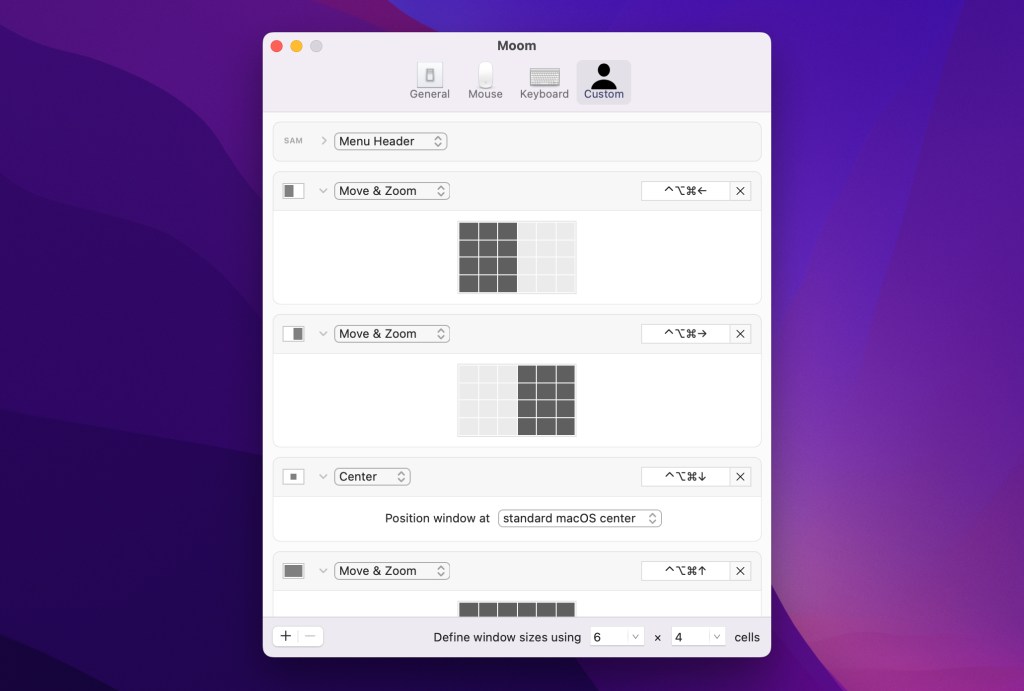
Although macOS will let you quickly arrange windows in Full Screen and Split View, that’s pretty much your lot for managing things – unless you have Moom installed, of course.
This app offers a slew of window management choices. You can resize a window by dragging it to a screen edge, by drawing a box on the screen to say where you want it to go, or by way of a user-defined keyboard shortcut. Once you’ve used Moom, Macs feel naked without it.
BetterTouchTool

This app tries to be friendly, but may bewilder newcomers. Persevere, though, because BetterTouchTool can radically power up every one of your input devices.
It achieves this through you defining trigger/shortcut pairs. For example, you might launch Mail with Shift+Ctrl+M, add advanced four-finger gestures to your trackpad, power up your Magic Mouse, or adjust how window buttons behave when clicked along with a modifier. This one needs you to invest time, then, but will pay you back with lashings of interest.
Buy BetterTouchTool ($22, direct)
Hazel
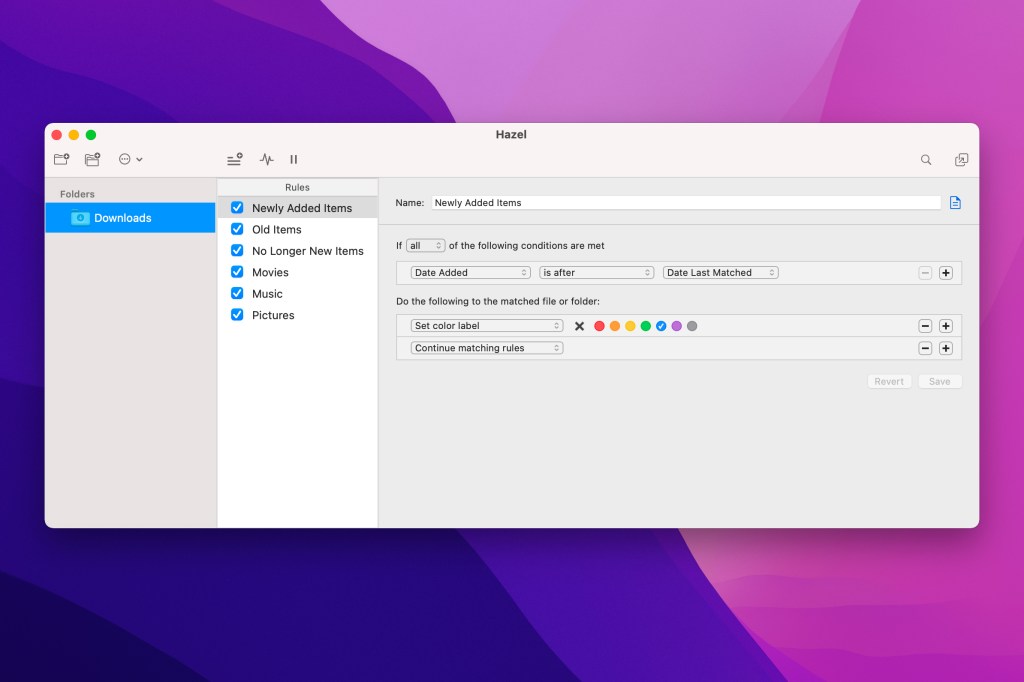
Chances are your Desktop and Downloads folders look like someone emptied a filing cabinet on them and set off a dozen air blowers. Fortunately, Hazel can make sense of the chaos.
You decide which folders Hazel monitors and then what happens to any files within. Rules are built in a manner that will be familiar to anyone who’s delved into Smart Folders in Finder, and make it a cinch to tag and rename files, and move them to a more suitable destination – or lob old ones into the Trash if they’re no longer useful.
GrandPerspective

Once you buy a Mac, you can’t easily (or, in many cases, at all) upgrade its internal storage. That’s a problem when you run out of space. Sometimes, though, a few whacking great files are gobbling up loads of room.
GrandPerspective isn’t the prettiest of apps, but it does give you a bird’s eye view of your entire Mac – or a specific folder. Large blocks represent big documents – candidates for offloading to an external drive, and letting your Mac breathe more easily.
Get GrandPerspective (free, direct / $2.99/$2.99, Mac App Store)
Flowered up: DaisyDisk
Another scanning app, DaisyDisk ($9.99/£9.99, direct / $9.99/£9.99, Mac App Store) has an interface out of a sci-fi movie. If GrandPerspective feels overwhelming, DaisyDisk is a perfect alternative, with its dazzling visuals helping you hone in on space hogs.
Carbon Copy Cloner
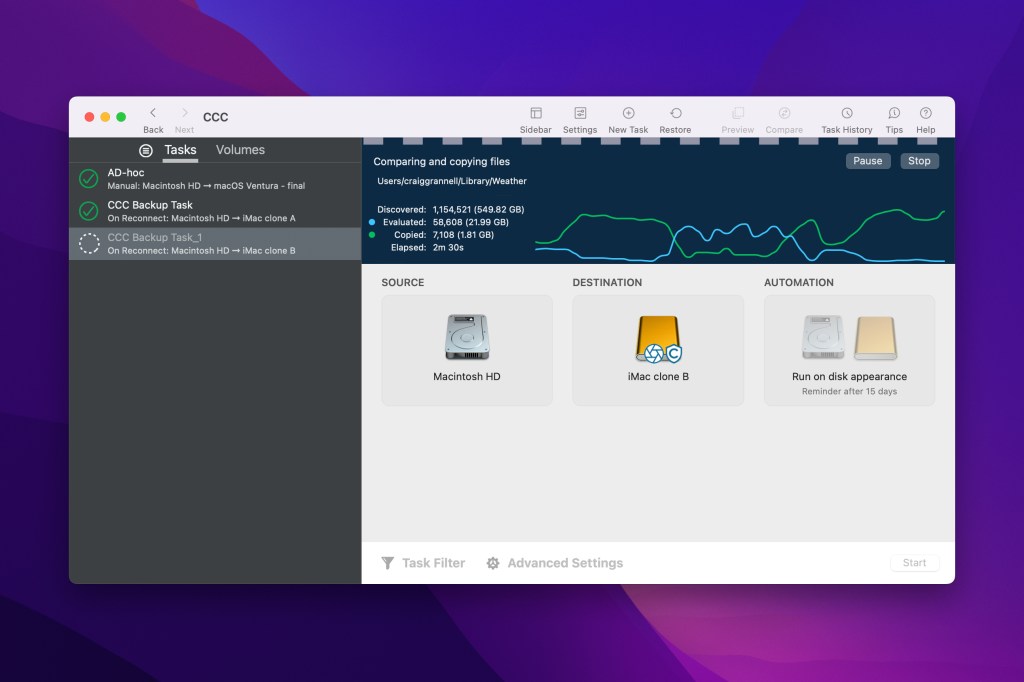
Plug a USB drive into your Mac and Time Machine will offer to start backing up. You should do that immediately. But we recommend using Carbon Copy Cloner too.
Although its old trick of creating bootable drives has been made trickier by Apple Silicon, CCC is still packed with features for keeping your data safe. Use it to take a regular snapshot of one or more drives or folders, which can be stashed for emergencies. It’s also ideal for taking a snapshot of a Mac before a major upgrade that you can later browse and recover data from should you need to.
Buy Carbon Copy Cloner ($49.99/£40.75, direct)
On a cloud: Backblaze
Local backups alone are no good when all your kit gets nicked or destroyed in a fire. So also backup your Mac to the cloud with Backblaze ($9 per month, direct).
Small utilities. Big ideas
Simple utilities can make a big difference in how great your Mac is to use, as these beauties prove.

Amphetamine (free, Mac App Store): Force your Mac to stay awake indefinitely, temporarily, or based on app/network triggers.
Bartender ($16, direct): Bring sanity to your menu bar by organising items and have them appear only when needed.
KeyboardCleanTool (free, direct): Temporarily disable your keyboard with a click, while you set to work de-griming the thing.
Resolutionator ($3, direct): Bring back the classic resolution switcher to your menu bar that Apple inexplicably ditched.
Rocket (free, direct): Unleash emoji on the world via inline auto-complete, until everyone demands that you stop.
Status Bar Music Player ($1.99/£1.99, Mac App Store, depicted above): Show the current Apple Music/Spotify track in the menu bar, and access cover art and controls with a click.
Transloader ($9.99/£9.99, Mac App Store): Kick off massive downloads on one Mac while browsing on another – or even an iPhone or iPad.
The Unarchiver (free, Mac App Store): Open any archive, from RAR to ancient formats like Stuffit and LZH.
On Safari: 5 great browser extensions
If Apple’s browser doesn’t include features you crave, bolt them on with these fine extensions.
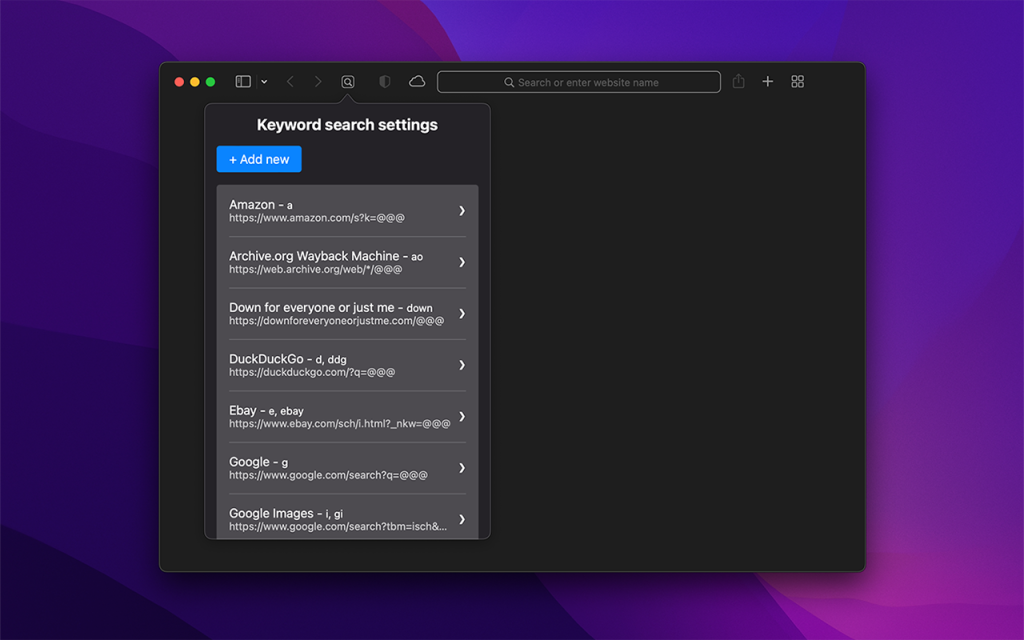
1Blocker ($14.99/£14.99 per year, Mac App Store): Block trackers, nuke ads (but whitelist favourite sites) and create custom filters.
Hush (free, Mac App Store): Banish those ridiculous cookie pop-ups for good, silently and in the background.
Keyword Search ($0.99/99p, Mac App Store, depicted above): Get to search results fast with custom shortcuts in the address bar.
PiPifier (free, Mac App Store): Prod the magic button to have a video play in its own floating window.
StopTheMadness Pro ($14.99/£14.99, Mac App Store): Gain control over (or ruthlessly squash) all kinds of annoyances from sites that make browsing harder.
Super sub: Setapp
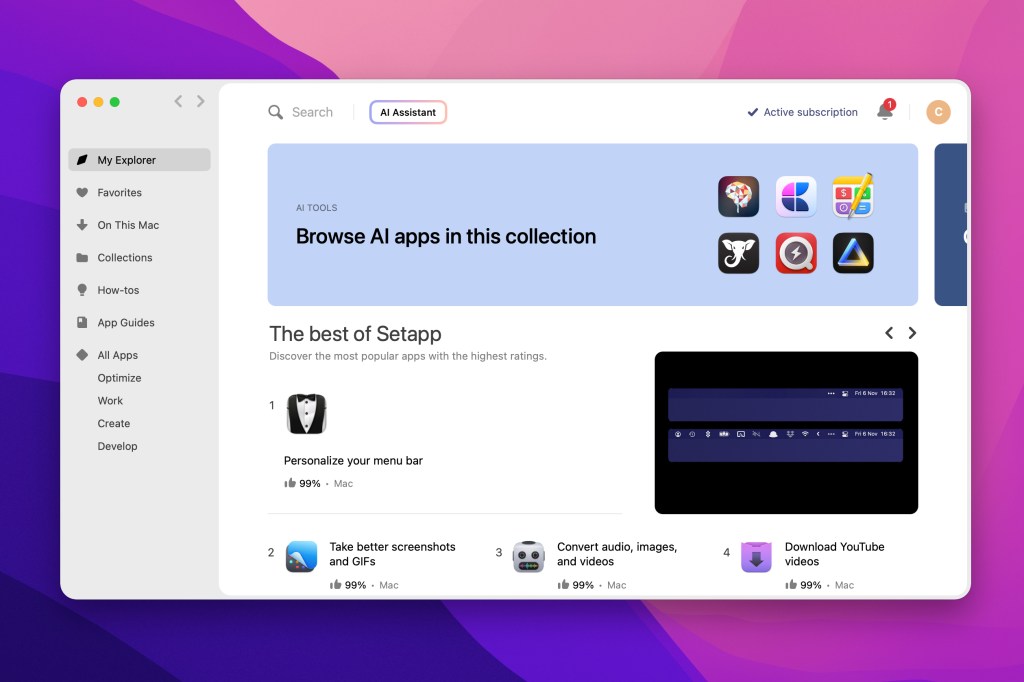
We’re cheating with this last entry, because it’s not one app, but several. Setapp is like Netflix for Mac apps, giving you full access to a wide range of products for a monthly fee. (Apps available on iOS are unlocked on iPhone and iPad as well.)
You might not recognise every entry in the catalogue, but there are heavy hitters within, including MindNode, email client Newton and writing tool Ulysses. There are loads of handy utilities too, not least mobile device manager AnyTrans.
Buy Setapp ($9.99 per month, direct)



